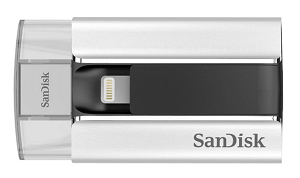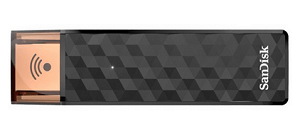Since, Apple devices are tightly integrated with iCloud, the easiest way to extend the storage capacity of iPhone is to upload your photos and videos to iCloud.
In addition to Apple’s iCloud Storage Service, there are other reputed Cloud Storage providers like Dropbox, Google Drive, OneDrive and Flickr that you can make use of to store your files, photos and videos.
If you do not like the idea of using paid or subscription based storage services or do not want to upload photos to Cloud services, there are other ways to extend the storage capacity of iPhone.
Extend Storage Capacity of iPhone or iPad
In addition to using iCloud and other Cloud storage services, you can extend the storage capacity of your iPhone or iPad using the following methods.
- Wireless Hard Drives
- USB Thumb Drives
- Wireless USB Drives
1. Extend iPhone Storage Using USB Drive
The simplest way to extend the storage capacity of iPhone or iPad is to buy a USB Drive that can connect to your Apple Device via the charging port.
While you can easily find USB Drives that can connect to iPhone using the charging port, one better known name is SanDisk iXPAND Flash Drive for iPhone and iPad, available in 16, 32, 64 and 128 GB options.

As you can imagine, the only disadvantage of this option is that the USB Drive will be occupying the charging port of iPhone.
2. Expand iPhone Storage Using Wireless USB Drive
If you do not like the idea of a USB Device being physically connected to iPhone, you can go for Wireless USB Devices like Sandisk Connect Wireless Stick that can wirelessly connect to iPhone.
Similar to Router, a Wireless USB Drive broadcasts its SSID, allowing your iPhone or iPad to connect to it over a Wi-Fi Network.
While this appears to be the best option to extend the storage capacity of iPhone, the disadvantage of this option is that Wireless USB Drives are very expensive.
3. Extend iPhone Storage Using Wireless Hard Drives
Another way to expand or extend the storage capacity of iPhone is by using an external storage device that can wirelessly connect to both mobile phones and computers.
These Wireless Hard Drives broadcast their own Wi-Fi signals (just like a Router), which allows you to connect your iPhone, iPad or Mac to the Hard Drive over a Wi-Fi Network.
While Wireless Storage drives are a good option for use at home or office, they lack portability and are not ideal for carrying them around with iPhone.